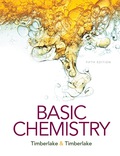
Concept explainers
(a)
Interpretation:
To state the polysaccharide that fits best in the given description.
Concept Introduction:
A polysaccharide refers to a polymer that is made up of many monosaccharide units that are joined together through special type of linkage known as glycosidic linkage. Four of the most important biologically important polysaccharides are amylopectin, amylose, cellulose and glycogen. These all are the
(b)
Interpretation:
To state the polysaccharide that fits best in the given description.
Concept Introduction:
A polysaccharide refers to a polymer that is made up of many monosaccharide units that are joined together through special type of linkage known as glycosidic linkage. Four of the most important biologically important polysaccharides are amylopectin, amylose, cellulose and glycogen. These all are the polymers made up of D- glucose units and they only differ in the amount of branching they exhibit and the type of glycosidic linkage which is present in their structures.
(c)
Interpretation:
To state the polysaccharide that fits best in the given description.
Concept Introduction:
A polysaccharide refers to a polymer that is made up of many monosaccharide units that are joined together through special type of linkage known as glycosidic linkage. Four of the most important biologically important polysaccharides are amylopectin, amylose, cellulose and glycogen. These all are the polymers made up of D- glucose units and they only differ in the amount of branching they exhibit and the type of glycosidic linkage which is present in their structures.
(d)
Interpretation:
To state the polysaccharide that fits best in the given description.
Concept Introduction:
A polysaccharide refers to a polymer that is made up of many monosaccharide units that are joined together through special type of linkage known as glycosidic linkage. Four of the most important biologically important polysaccharides are amylopectin, amylose, cellulose and glycogen. These all are the polymers made up of D- glucose units and they only differ in the amount of branching they exhibit and the type of glycosidic linkage which is present in their structures.
Want to see the full answer?
Check out a sample textbook solution
Chapter 18 Solutions
EBK BASIC CHEMISTRY
- The reaction Q(g) + R(g) → Z(l) is shown to be exothermic. Which of the following is true concerning the reactionarrow_forwardWhich of the following has the largest standard molar entropy, S° (298.15 K) He H2 NaCl KBr Hgarrow_forwardWhich of the following is true for a particular reaction if ∆G° is -40.0 kJ/mol at 290 K and –20.0 kJ/mol at 390 K?arrow_forward
- Choose the major product of the reaction with correct regio- and stereochemistry. Br2 H₂O O "Br Br & O 'Br OH Br 吡 O OH OH Br "OH Brarrow_forwardSelect the major product of the following reaction. & Br (CH)CONa (CH₂),COH 0 OC(CH) O &arrow_forwardDraw the products of the hydrolysis reaction between the ester molecule and water. Determine the products of the following reaction.arrow_forward
 ChemistryChemistryISBN:9781305957404Author:Steven S. Zumdahl, Susan A. Zumdahl, Donald J. DeCostePublisher:Cengage Learning
ChemistryChemistryISBN:9781305957404Author:Steven S. Zumdahl, Susan A. Zumdahl, Donald J. DeCostePublisher:Cengage Learning ChemistryChemistryISBN:9781259911156Author:Raymond Chang Dr., Jason Overby ProfessorPublisher:McGraw-Hill Education
ChemistryChemistryISBN:9781259911156Author:Raymond Chang Dr., Jason Overby ProfessorPublisher:McGraw-Hill Education Principles of Instrumental AnalysisChemistryISBN:9781305577213Author:Douglas A. Skoog, F. James Holler, Stanley R. CrouchPublisher:Cengage Learning
Principles of Instrumental AnalysisChemistryISBN:9781305577213Author:Douglas A. Skoog, F. James Holler, Stanley R. CrouchPublisher:Cengage Learning Organic ChemistryChemistryISBN:9780078021558Author:Janice Gorzynski Smith Dr.Publisher:McGraw-Hill Education
Organic ChemistryChemistryISBN:9780078021558Author:Janice Gorzynski Smith Dr.Publisher:McGraw-Hill Education Chemistry: Principles and ReactionsChemistryISBN:9781305079373Author:William L. Masterton, Cecile N. HurleyPublisher:Cengage Learning
Chemistry: Principles and ReactionsChemistryISBN:9781305079373Author:William L. Masterton, Cecile N. HurleyPublisher:Cengage Learning Elementary Principles of Chemical Processes, Bind...ChemistryISBN:9781118431221Author:Richard M. Felder, Ronald W. Rousseau, Lisa G. BullardPublisher:WILEY
Elementary Principles of Chemical Processes, Bind...ChemistryISBN:9781118431221Author:Richard M. Felder, Ronald W. Rousseau, Lisa G. BullardPublisher:WILEY





